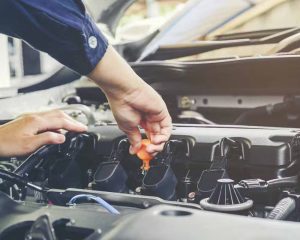Singapore’s Automotive Afterlife: Your Complete Guide
The bustling metropolis of Singapore has developed a sophisticated network of car scrap yards that serve as the final destination for the nation’s retired vehicles. In a country where land is precious and environmental consciousness runs deep, these automotive graveyards represent far more than mere disposal sites—they embody Singapore’s commitment to sustainable resource management and the principles of a circular economy.
The Economic Machinery of Vehicle Disposal
Singapore’s approach to automotive recycling reflects the nation’s broader economic philosophy: nothing goes to waste, everything has value. The island’s vehicle scrapping facilities operate within a tightly regulated framework that ensures maximum resource recovery whilst maintaining environmental standards.
Key benefits of Singapore’s systematic approach include:
- Preventing abandoned vehicles from occupying valuable space
- Ensuring proper environmental disposal through authorised automobile scrap yards, Singapore has established
- Maximising resource recovery from end-of-life vehicles
- Supporting regulatory compliance for vehicle owners.
Understanding Singapore’s Certificate of Entitlement System
The city-state’s unique Certificate of Entitlement (COE) system creates an intricate relationship between vehicle ownership and disposal. When a COE expires after ten years, vehicle owners face a critical decision: renew the certificate or surrender their vehicle to licensed car dismantling yards. Singapore operates under strict governmental oversight.
This system creates a steady stream of vehicles flowing into automotive recycling centres, which Singapore has positioned strategically across the island. The predictable nature of this flow allows these facilities to operate with remarkable efficiency, processing vehicles in a manner that maximises both economic and environmental returns.
The Sophisticated Process of Vehicle Dismantling
Modern vehicle disposal facilities in Singapore employ cutting-edge technology to extract maximum value from each automobile. The process involves several carefully orchestrated stages:
- Initial Assessment: Trained technicians evaluate each vehicle to determine the most valuable components for resale or recycling
- Fluid Drainage: All automotive fluids are carefully extracted and processed according to environmental regulations
- Component Harvesting: Useable parts are removed and catalogued for the second-hand market
- Material Separation: Metals, plastics, and other materials are segregated for appropriate recycling channels
- Final Processing: Remaining materials are processed through industrial shredding and sorting equipment
Environmental Stewardship in Practice
Singapore’s automotive recycling industry demonstrates the nation’s commitment to environmental responsibility within a broader sustainability framework. As Professor Brajendra Mishra from Worcester Polytechnic Institute observed in his study on automotive recycling’s environmental impact, “What the automotive recyclers are doing is saving materials, saving energy and positively impacting the environment, in a great sense.” These facilities ensure that hazardous materials are handled appropriately, preventing contamination of the island’s limited natural resources.
The metal recovery rates achieved by Singapore’s car breaking yards reflect both technological sophistication and regulatory rigour. Singapore’s National Environment Agency statistics reveal that the daily domestic waste generated per capita decreased from 0.88 kg in 2023 to 0.85 kg in 2024, demonstrating sustained reduction efforts across multiple sectors, including automotive recycling.
The environmental benefits extend beyond mere waste reduction. Global automotive recycling statistics indicate that enough materials are recycled from cars to save 85 million barrels of oil from being used to make new parts, whilst approximately 99% of car batteries are recycled. By recovering and recycling automotive materials, these facilities reduce Singapore’s dependence on imported raw materials, contributing to the nation’s resource security objectives whilst supporting the government’s ambitious target of achieving a national recycling rate target of 70% in 2030.
The Secondary Market Economy
Vehicle scrappage facilities in Singapore support a thriving secondary market for automotive components, providing:
- Affordable alternatives for vehicle maintenance and repairs
- Extended useful life for automotive parts that might otherwise be discarded
- Economic opportunities for local mechanics and vehicle owners
- Quality recycled components that support sustainable consumption patterns
This secondary market represents a sophisticated example of circular economy principles in practice, creating value from what might otherwise be considered waste.
Regulatory Framework and Quality Standards
Singapore’s approach to automotive recycling involves comprehensive regulatory oversight that ensures consistent quality and environmental standards. Licensed operators must demonstrate compliance with strict protocols governing everything from worker safety to environmental protection.
The regulatory framework creates barriers to entry that ensure only qualified operators participate in the industry, maintaining high standards across all facilities. This approach protects both consumers and the environment whilst supporting legitimate business operations. The Land Transport Authority manages the car scrapping industry in Singapore, ensuring that all facilities meet stringent operational requirements.
Challenges and Adaptation in Modern Recycling
Despite Singapore’s sophisticated approach, the automotive recycling sector faces evolving challenges. According to industry analysis, Singapore’s overall recycling rate declined from 62% in 2013 to 52% in 2023, influenced by several factors:
- Global market fluctuations affecting export demand
- Limited domestic recycling infrastructure capacity
- Basel Convention and China’s “National Sword” policy restrictions
- Recent shipping route disruptions are increasing operational costs
- Dependence on international markets for recyclable material processing
Robin Rheaume, a zero-waste advocate and founder of Recyclopedia.sg, argues that “consumer education and behaviour are not the primary issues” affecting recycling rates. Instead, these systemic challenges require the automotive recycling centres Singapore operates to maintain greater efficiency and domestic processing capabilities.
Future Developments and Technological Innovation
Singapore’s automotive recycling industry continues evolving as vehicle technology advances. The increasing prevalence of electric vehicles presents new challenges for car wrecking yards that Singapore will need to address in the coming years.
Investment in advanced recycling technologies ensures that Singapore remains at the forefront of sustainable automotive disposal practices.
Conclusion
Singapore’s automotive recycling industry exemplifies the nation’s approach to resource management: systematic, efficient, and environmentally conscious. Through careful regulation and technological innovation, the country has created an automotive disposal system that serves economic, environmental, and social objectives simultaneously. For vehicle owners seeking responsible disposal options, Singapore’s comprehensive network of authorised facilities ensures that end-of-life vehicles contribute positively to the nation’s sustainable development goals, making every car scrap yard Singapore a vital component of the circular economy.




